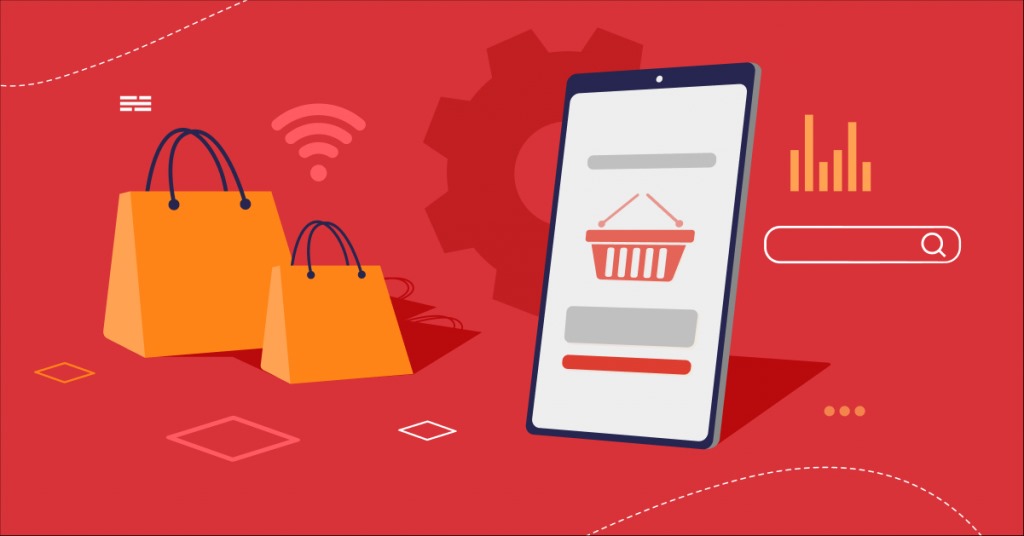Elevate Your E-Commerce: Building Secure, Scalable Sites

Security and scalability are two essential pillars that support a successful e-commerce firm in the continually changing digital market. E-commerce websites must be developed in an encrypted and efficient manner. Businesses have to negotiate an intricate structure of security risks while enabling the rapid expansion of their business activities while they try to cope with the growing demands of a marketplace that is becoming increasingly complicated online. This manual goes deeply into the critical elements of building e-commerce websites that are not only prepared to fend off online attacks but also to grow and prosper in a constantly shifting industry. Join us on this journey to learn the fundamental ideas and tactics that will give your online business the stamina to face obstacles and the adaptability to seize chances. In today’s modern world, the way we used to buy and sell goods and services has been transformed by e-commerce. It has become essential for businesses who seek to prosper in this competitive environment to develop secure as well as scalable e-commerce websites as the e-commerce sector continues to expand. The main recommendations, considerations and methods for creating e-commerce websites that are not only simple to use but also robust in terms of safety and capacity for growth have been addressed in this comprehensive guide.
Understanding the E-commerce Landscape
- The Growth of E-commerce: Online sales now make up a sizable amount of worldwide retail revenue as the e-commerce sector has grown exponentially over time. Customers already favour purchasing conveniently from mobile devices, and this tendency is anticipated to persist.
- Important Facts and Trends: It is important to fully understand the competitive environment and recent developments. Although the market is largely dominated by major corporations like Amazon, Alibaba, and eBay, e-commerce businesses may continue to thrive by establishing distinctive selling propositions and addressing certain demands from customers.
Planning Your E-Commerce Website
- Having Specific Goals: The first step is to clearly define your e-commerce website's goals. Your aims will influence the look and operation of your website, whether they be to boost revenue, increase market reach, or improve brand visibility.
- Choosing Your Ideal Clients: It's crucial to comprehend the tastes, actions, and problems of your target audience. To customize your website to their needs, conduct market research and establish buyer personas.
- Competitive Research: To find market gaps and opportunities, examine your competitors. What distinct advantage does your e-commerce website have over the competition?
Choosing the Most suitable E-Commerce Platform
- SaaS vs. Open-Source Platforms: Choose between Software as a Service (SaaS) and open-source e-commerce systems. Although they allow customization, open-source platforms like WooCommerce and Magento demand greater technical know-how. Although SaaS platforms like BigCommerce and Shopify are user-friendly, they could have some restrictions.
- Popular Online Shopping Platforms: Discover the characteristics of well-known e-commerce systems including Magento, Shopify, WooCommerce, Big Commerce, and more.
- Factors to be considered: When selecting a platform, take into account elements like cost, payment channels, and third-party integrations.
User Experience and Design
- Adaptive Design: To give users a smooth experience, make sure your website is responsive to different devices and screen sizes.
- Sense-Based Navigation: Create categories and menus that are simple to use for visitors to find products.
- Mobile Enhancement: As a large amount of e-commerce traffic originates from smartphones, make your website mobile-friendly.
Measures for Security
- SSL Security: To protect data transmission between users and your website, utilize SSL encryption.
- Payment Protection: Select secure payment gateways that abide by Payment Card Industry Data Security Standard (PCI DSS) specifications.
- Protection of Data: Follow data protection laws and best practices to protect user data.
- Consistent Security Audits: To find vulnerabilities and fix them quickly, conduct frequent security audits and penetration tests.
Versatility
- Solutions for Scalable Hosting: As your business expands, choose to host options that can cope with the additional demand and traffic.
- Network for delivering content (CDN): Use a CDN to accelerate the delivery of content and shorten page load times.
- Optimizing databases: To ensure effective data retrieval and processing, optimize your database.
- Caching Techniques: Utilize caching techniques to lessen server load and accelerate websites.
Integration of Payment Gateways
- Payment Alternatives: Provide a range of payment choices to accommodate different consumer preferences.
- PCI Conformity: To protect credit card data, adhere to PCI DSS guidelines.
- User Confidence and Belief: Establish confidence by making sure the checkout process is quick and secure.
Management of Inventory and Orders
- Product Catalogs: Organize and showcase product listings efficiently using thorough descriptions and top-notch photos.
- Inventory Management: Set up inventory control systems to monitor stock levels and prevent overselling.
- Ordering procedures: To give clients accurate and timely order updates, and streamline order processing.
Marketing and SEO
- Best Practices for SEO: Utilize relevant keywords, Meta descriptions, and high-quality content to make your website search engine-friendly.
- Content Promotion: To draw in and keep clients, and produce interesting and educational material.
- Integration of social media: Utilize social media tools to communicate with your audience and raise brand awareness.
- Email Promotion: Use email marketing initiatives to promote sales and foster customer relationships.
Customer Service
- Live Talk: To assist clients in real-time via live chat, provide the service.
- Section Q&A: To answer frequently asked questions from customers, create a thorough FAQ section.
- Policies for returns and refunds: To foster confidence, be clear about your return and refund policies.
- Feedback Systems: Gather customer input and act on it to continually enhance your offerings.
Analytics and Data Insights
- Internet Analytics: Track website traffic, user behaviour, and conversion rates with technologies like Google Analytics.
- User Activity Monitoring: Keep an eye on how visitors interact with your website to spot potential improvements.
- Testing A/B: Optimize website elements with A/B testing for higher conversion rates.
- Conversion Enhancement: Put initiatives in place to raise the proportion of visitors who buy something.
Adherence to the Law
- Privacy Protection under GDPR: Respect data protection laws like the GDPR to safeguard user privacy.
- Rules and Regulations: The rules for utilizing your website should be spelt out in clear language.
- Privacy Principles: Make a thorough privacy policy to educate users on how their data is handled.
- Regulations and Taxes: Remain in compliance with local laws governing taxes and online sales.
Upkeep and Modifications
- Continual Backups: Regularly back up your website's data to avoid losing it in the event of unforeseen problems.
- Program Updates: Update the software, plugins, and themes on your website to fix security flaws.
- Performance Evaluation: Monitoring website performance will help you find problems quickly and fix them.
- Fixing bugs: Users' reported defects and problems should be addressed and fixed.
- The Continued Adventure: A scalable and secure e-commerce website takes time to develop. To remain competitive, keep up with market trends and constantly upgrade your website.
- Maintaining Competence: In order to improve the consumer experience and obtain a competitive advantage, embrace upcoming technologies like AI, AR, and VR.
- Acknowledging Future Technologies: Businesses that adapt to new technologies and client preferences will prosper as e-commerce's exciting future unfolds.
On the whole, pursuing the development of scalable and secure e-commerce websites is a long-term investment that pays off. Meticulous planning, dedication to offering top-notch user experiences and close attention to detail, is necessary for creating websites that are scalable as well as secure. Businesses can position themselves for success in the dynamic world of e-commerce by adhering to the rules and best practices provided in this thorough handbook. Businesses may build confidence with their consumers and protect their sensitive data by putting a high priority on security, while scalability makes sure they can adjust to growth and market volatility. These two pillars are still crucial for long-term success as the e-commerce environment changes constantly. A digital fortress that can resist the rigours of time and technology must be built, not just a website. So, whether you're a beginning business owner or an established e-commerce behemoth, keep in mind that creating secure and scalable e-commerce websites is a continuous process that requires constant adjustments, vigilance, and dedication to giving your customers the best online experience possible.
Recent Stories
500k Customer Have
Build a stunning site today.
We help our clients succeed by creating brand identities.
Get a Quote





















































































































